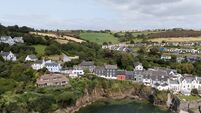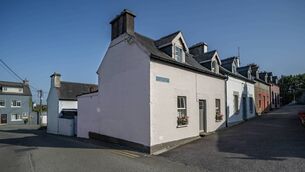House prices set to recover nationally

Over the last three months, asking prices for newly listed properties increased by 2% nationally and almost 1% in Dublin.
The latest house price survey from MyHome.ie in association with Davy stockbrokers predicts a rebound in the market as price momentum builds.
The report also points out that Dublin and commuter belt counties account for three quarters of transactions exceeding €220,000.
Dublin has made the first gain since the first half of last year, but affordability constraints will see it led by the rest of the country.
The report predicts that house inflation will be close to 5% this year.
The mix-adjusted (to discount the effects of varying property characteristics) asking price for new sales nationally is €220,000, an increase of €5,000 compared to the last quarter of 2015, while the corresponding figure for Dublin is €315,000, an increase of €2,600.
Davy chief economist and report author Conall MacCoille said a key factor supporting house prices this year would be a tighter housing market. He said the stock of properties listed for sale on the MyHome website over the last three months fell to a new low.
“Despite popular opinion, the immediate impact of the Central Bank lending rules was to make it easier to buy as sellers anticipated the slowdown in Dublin house prices and decided to bring their properties to the market in 2015,” said Mr MacCoille. “That won’t be repeated this year while housing supply in the capital is likely to pick up less sharply through the summer months.”
Mr MacCoille said ambitious new goals set under the last government’s Construction 2020 strategy were unlikely to be attained with no stable coalition yet formed for the new Dáil.
“Overall, home building levels look set to remain depressed for some time and while this will support Irish house prices, it will hurt activity levels,” said Mr Mr MacCoille.
The analysis shows that Dublin and commuter belt counties last year accounted for 75% of transactions exceeding €220,000, the threshold below which lenders require a 10% deposit.
Of the 48,374 residential property sales recorded last year, just 35% (16,893) exceeded €220,000, with Dublin and commuter belt counties accounting for 75%.
Mr MacCoille said the Central Bank mortgage lending rules had prevented households from reacting to the lack of housing supply by taking on more highly leveraged loans and further bidding up house prices.
However, the analysis showed it was a mainly Dublin/commuter belt phenomenon where the lack of housing supply was most severe and affordability more stretched.
Wicklow was the only region where the asking price for the three-bed semi-detached house fell around 1.49% to €265,000. There was no change in prices for similar houses in Kerry, Cork, Kilkenny, and Wexford.
Longford had the lowest asking price at around €60,000, and Dublin the highest at €285,000.












